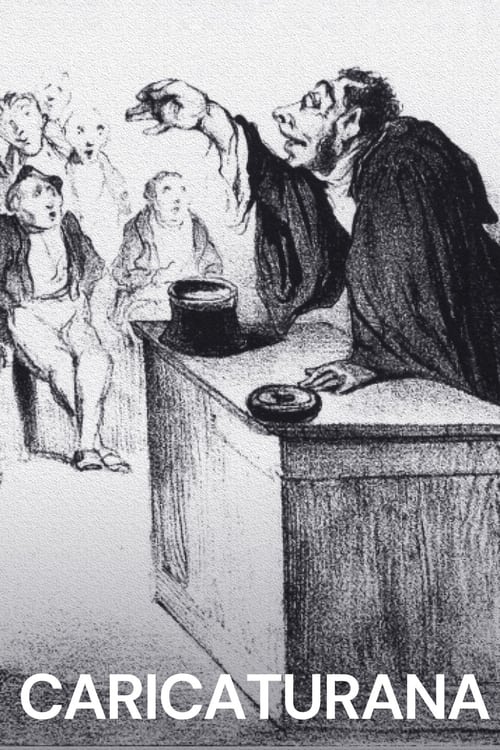
Ask Your Own Question
What is the plot?
What is the ending?
In the ending of "Semiotic Plastic," the protagonist, a struggling artist named Alex, confronts the consequences of their choices. After a series of intense personal revelations and conflicts with their peers, Alex ultimately decides to embrace their true self, leading to a cathartic moment of artistic expression. The film concludes with Alex showcasing their work at a gallery, surrounded by friends and supporters, symbolizing a new beginning.
As the final act unfolds, the scene opens in a dimly lit art studio, cluttered with canvases and paint splatters. Alex stands in front of a large canvas, their hands trembling as they prepare to paint. The weight of their internal struggle is palpable; they are torn between the expectations of the art world and their desire for authenticity. Flashbacks of previous confrontations with their mentor, who has been critical of Alex's unconventional style, flood their mind. The mentor's voice echoes, filled with doubt and pressure, pushing Alex to conform.
In a moment of clarity, Alex takes a deep breath and begins to paint with fervor. The strokes are bold and erratic, reflecting their emotional turmoil. As the colors blend and clash on the canvas, Alex's expression shifts from anxiety to determination. This act of creation becomes a cathartic release, symbolizing their acceptance of self and rejection of societal norms.
The scene transitions to the night of the gallery opening. The atmosphere is electric, filled with anticipation and chatter. Friends and fellow artists gather, their faces illuminated by the soft glow of the gallery lights. Alex stands nervously at the entrance, their heart racing as they prepare to unveil their work. The camera captures the mix of excitement and fear in their eyes, a reflection of their journey thus far.
As the crowd gathers around Alex's piece, a hush falls over the room. The canvas, now a vibrant explosion of colors and shapes, draws gasps of admiration. Alex watches, a mix of pride and vulnerability washing over them. They see familiar faces in the crowd--supportive friends who have stood by them, and even the mentor, who appears taken aback by the raw emotion captured in the artwork.
In this moment, Alex feels a profound sense of belonging. The internal conflict that once consumed them begins to dissipate as they realize that their art resonates with others. The camera pans to the mentor, who, after a moment of silence, approaches Alex. There is a flicker of recognition in the mentor's eyes, a hint of respect for Alex's courage to break free from convention.
The film concludes with a wide shot of the gallery, filled with laughter and conversation. Alex stands at the center, surrounded by friends, their heart swelling with a newfound sense of identity. The final image captures Alex's smile, a symbol of triumph over adversity, as they embrace their journey as an artist. The screen fades to black, leaving the audience with a sense of hope and the message that true self-expression can lead to acceptance and fulfillment.
Is there a post-credit scene?
In the movie "Semiotic Plastic," there is indeed a post-credit scene that adds an intriguing layer to the narrative.
As the credits roll, the screen fades to black before transitioning to a dimly lit room filled with various art pieces and sculptures, all made from unconventional materials. The camera slowly pans across the room, revealing a large canvas covered in vibrant, chaotic colors. The atmosphere is thick with a sense of anticipation and mystery.
In the center of the room stands the protagonist, Alex, who appears contemplative and slightly disheveled, as if they have just emerged from a whirlwind of thoughts. Their expression is a mix of determination and uncertainty, reflecting the internal struggles faced throughout the film. As they approach the canvas, the camera zooms in on their hands, which are stained with paint and clay, symbolizing their journey of self-discovery and artistic expression.
Suddenly, a voice echoes from the shadows, belonging to a character introduced earlier in the film, a mentor figure named Sam. Sam's voice is calm yet probing, asking Alex if they are ready to confront the deeper meanings behind their art. This moment serves as a catalyst for Alex, who takes a deep breath, indicating a pivotal decision to embrace their artistic identity fully.
The scene concludes with Alex picking up a brush and making bold strokes on the canvas, the colors swirling together in a representation of their emotional turmoil and growth. As the camera pulls back, the artwork begins to take shape, hinting at a new beginning and the endless possibilities that lie ahead. The screen fades to black once more, leaving the audience with a sense of hope and curiosity about Alex's future endeavors in the world of art.
What motivates the protagonist, Alex, to pursue a career in semiotics?
Alex is driven by a deep-seated desire to understand the complexities of communication and meaning in a world saturated with signs. This motivation stems from a personal experience in childhood where a miscommunication led to a significant emotional fallout in his family, instilling in him a passion for clarity and connection.
How does the character of Maya influence Alex's journey throughout the film?
Maya serves as both a muse and a challenge for Alex. Her unconventional views on semiotics push him to question his own beliefs and methodologies. As their relationship develops, she becomes a catalyst for his growth, encouraging him to embrace ambiguity and the fluidity of meaning, which ultimately leads to a pivotal transformation in his understanding of his work.
What role does the semiotic plastic art installation play in the climax of the film?
The semiotic plastic art installation becomes a physical manifestation of the film's central themes. During the climax, it serves as a backdrop for a heated debate between Alex and his mentor, where the installation's shifting meanings reflect the characters' internal conflicts. This confrontation forces Alex to confront his fears and insecurities, leading to a breakthrough in his personal and professional life.
How does the relationship between Alex and his mentor, Dr. Hargrove, evolve throughout the film?
Initially, Dr. Hargrove represents a rigid, traditional approach to semiotics that Alex admires but struggles to fully embrace. As the story progresses, their relationship becomes strained due to differing philosophies. This tension culminates in a confrontation where Alex asserts his own identity and vision, ultimately leading to a reconciliation that acknowledges both their perspectives.
What is the significance of the recurring motif of mirrors in Alex's journey?
Mirrors symbolize self-reflection and the duality of perception in Alex's journey. Throughout the film, he encounters various mirrors that force him to confront his own identity and the way he perceives others. This motif highlights his internal struggle with authenticity and the fear of being misunderstood, ultimately leading to a deeper understanding of himself and his place in the world of semiotics.
Is this family friendly?
"Semiotic Plastic," produced in 2021, is not considered family-friendly due to its exploration of complex themes and mature content. The film delves into psychological and emotional struggles, which may be unsettling for children or sensitive viewers.
Potentially objectionable or upsetting aspects include:
- Intense Emotional Scenes: Characters experience deep emotional turmoil, including anxiety and existential dread, which may be distressing.
- Dark Themes: The film addresses themes of identity, societal expectations, and personal crises that could be heavy for younger audiences.
- Visual Symbolism: Some scenes contain abstract and surreal imagery that may be confusing or unsettling.
- Mature Language: There are instances of strong language that may not be suitable for children.
- Conflict and Tension: The interpersonal conflicts among characters can be intense and may evoke feelings of discomfort.
Overall, the film's tone and subject matter are geared towards a mature audience, making it less appropriate for children or those sensitive to such themes.





















